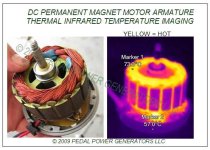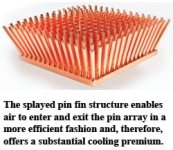dogman dan
1 PW
That's a trip, he does have the fork on backwards in the picture on page one.
Tough crowd here on ES eh? I totally believe you that it's working. It should be effective on a dd motor. I still can't believe nobody makes a motor with some built in cooling fins.
But some insist on numbers. Best bet might be to get yourself one of those heat guns. You know, point it to see the temp on something you don't actually touch. If you have one 1/2" hole in a hub cover, with some metal tape over it, you could even pull the tape and get readings directly from the stator. Stator temps will really tell all. Or add a temp sensor right on the stator, that's the very best way to get real stator temps. Fascinating to see on one of those how much difference it makes how you ride. You see that as it heats up though, rest of the ride you just see how long it takes to finally cool off. Even small vent holes help a lot with cooling when stopped quicker.
Anything that helps cool the cover of the motor will create a better heat differential between the hot stator coils and the cooler cover. Bigger the difference, the faster the motor will cool. It's the same thing that happens in winter, when you can push one of these 28mm motors a lot harder, a lot longer, before it gets all hot.
Re the axle, yes, the axle is a shitty conductor. But nevertheless, it's the first part on the outside that gets hot. This is because the stator, which makes the heat, never touches any other part of the motor except the wires. The copper wires are good conductors, so they do get hot nice and fast too. Then the magnets are very close to the hot stator, so they get warm fairly quick. Lastly, the outside covers get warm, with a big air gap. Likely the hot magnets which are in contact with the covers heat the covers. So when checking a DD motor for heat, I feel the middle of the motor, not the side cover.
Tough crowd here on ES eh? I totally believe you that it's working. It should be effective on a dd motor. I still can't believe nobody makes a motor with some built in cooling fins.
But some insist on numbers. Best bet might be to get yourself one of those heat guns. You know, point it to see the temp on something you don't actually touch. If you have one 1/2" hole in a hub cover, with some metal tape over it, you could even pull the tape and get readings directly from the stator. Stator temps will really tell all. Or add a temp sensor right on the stator, that's the very best way to get real stator temps. Fascinating to see on one of those how much difference it makes how you ride. You see that as it heats up though, rest of the ride you just see how long it takes to finally cool off. Even small vent holes help a lot with cooling when stopped quicker.
Anything that helps cool the cover of the motor will create a better heat differential between the hot stator coils and the cooler cover. Bigger the difference, the faster the motor will cool. It's the same thing that happens in winter, when you can push one of these 28mm motors a lot harder, a lot longer, before it gets all hot.
Re the axle, yes, the axle is a shitty conductor. But nevertheless, it's the first part on the outside that gets hot. This is because the stator, which makes the heat, never touches any other part of the motor except the wires. The copper wires are good conductors, so they do get hot nice and fast too. Then the magnets are very close to the hot stator, so they get warm fairly quick. Lastly, the outside covers get warm, with a big air gap. Likely the hot magnets which are in contact with the covers heat the covers. So when checking a DD motor for heat, I feel the middle of the motor, not the side cover.




